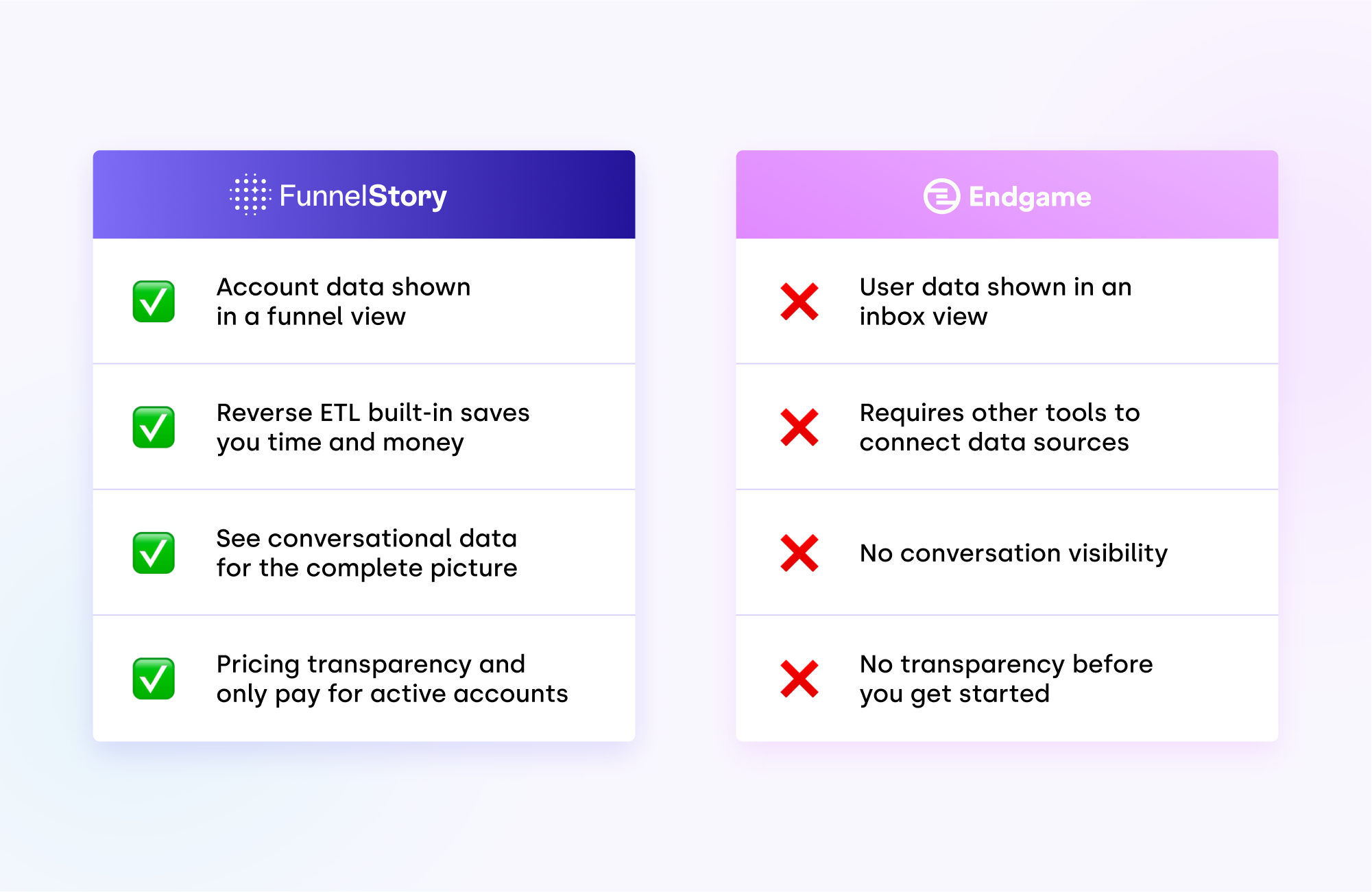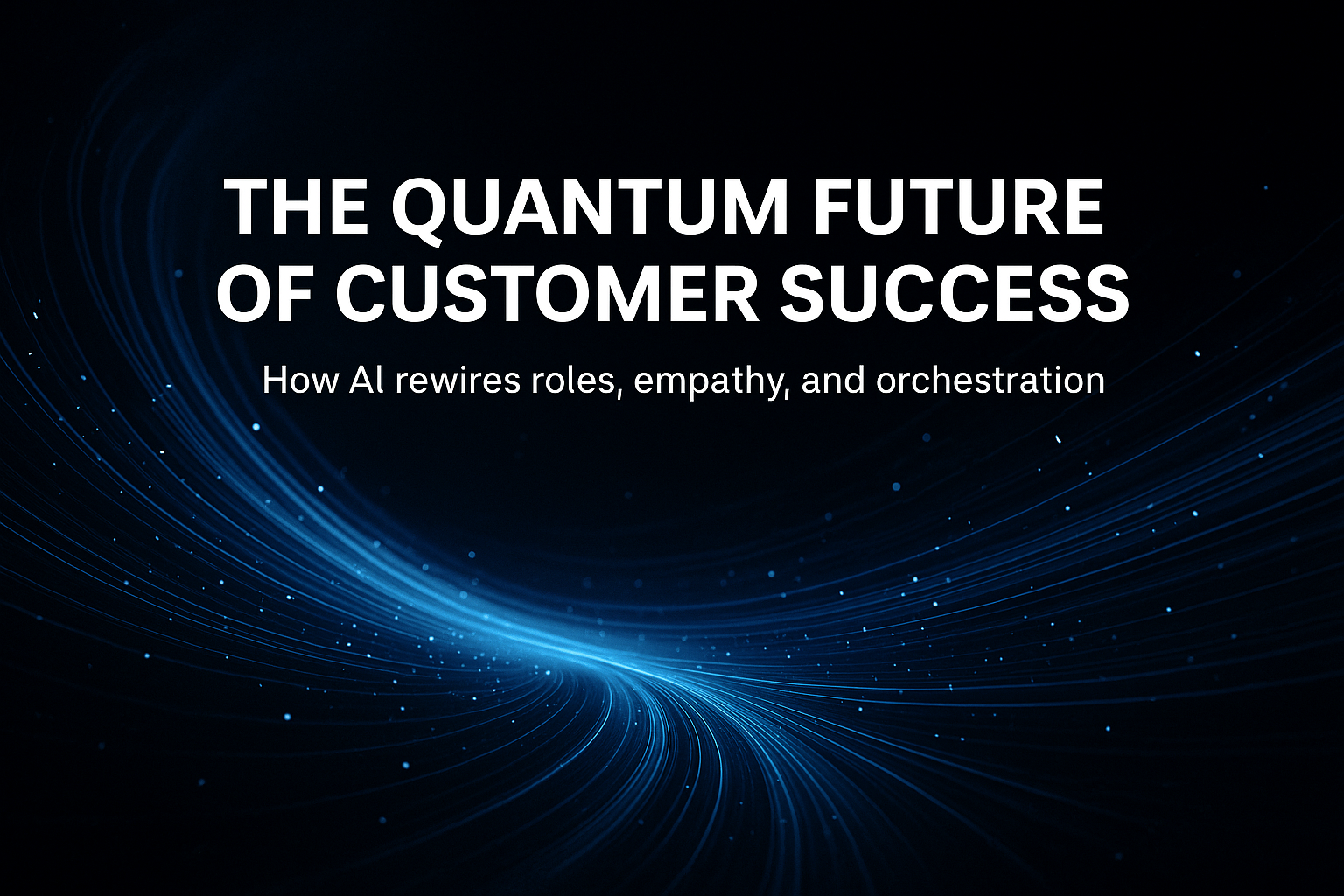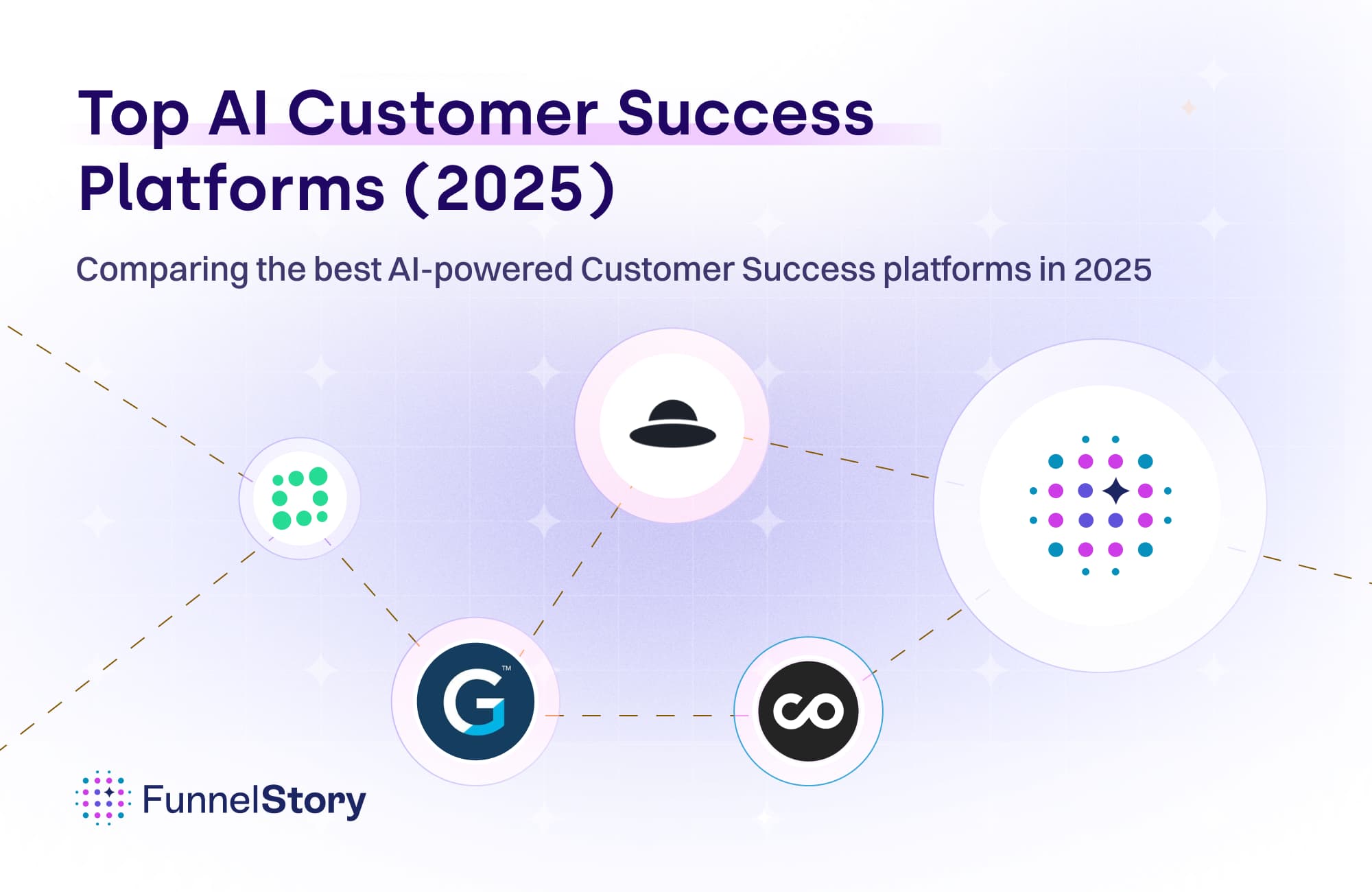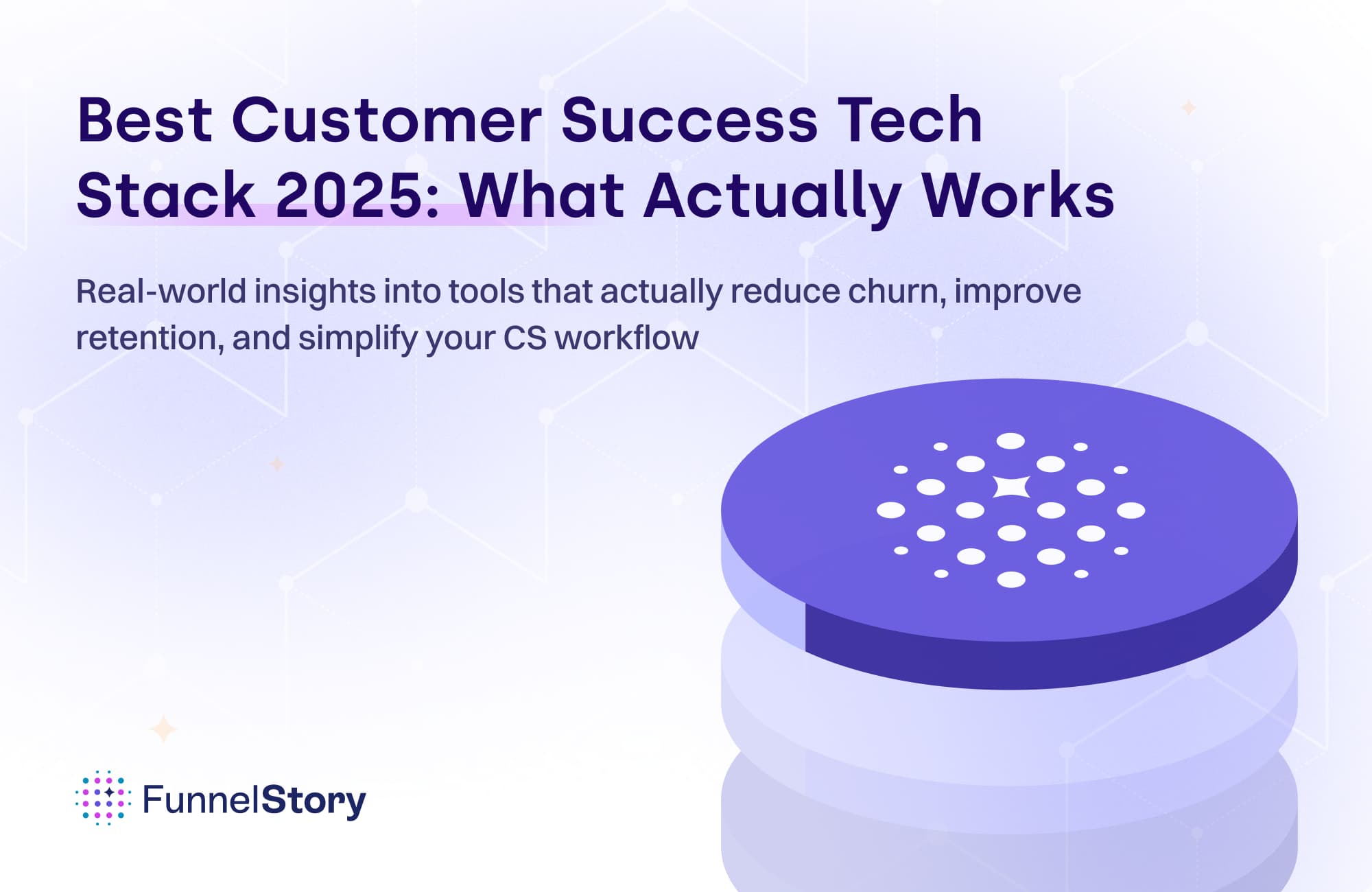In this article
The Best Endgame Alternative: FunnelStory
Deciding which PLS tool to purchase? This article helps compare Pocus and FunnelStory, so you can make the best choice for your organization.

By Alok Shukla
Cofounder and CEO
Sep 20, 2023
7 min read
Product-led sales (PLS) strategies should present your go-to-market (GTM) teams with deal insights that unlock critical next steps and actions. Should they follow up with account X? prioritize account Y? Nurture account Z a bit more?
But how do GTM teams get the confidence to proceed with these activities (with minimal effort)? This is where a PLS tech stack steps in to make matters easy.
A PLS tech stack unifies product and conversational data to help GTM teams get the insights and automation they need to convert self-serve users into long-paying customers. A PLS tech stack is crucial for PLG native companies or sales-led companies who want to tap into the data created during self-serve trials to close critical accounts.
In short, PLS tooling helps bridge the gap between multiple stakeholders in your GTM org like sales, product, marketing, and customer success with one intention: help their self-serve offering get more traction and accelerate growth.
Endgame: An Overview
Companies that offer a free tier or trial lack visibility into the behavior of their signups, trial users, and sales opportunities. Endgame lets sales teams understand this user behavior during a trial with minimal data and engineering effort.
As is usually the case with PLG or PLS strategies, reps are made to spend hours figuring out which accounts and users to engage with. Endgame allows sales reps to take quick calls on prospects and customers based on real-time data.
It provides visibility into the top accounts and users, where they are in the funnel, and helps reps decide whether they should engage with them or not.
Here’s a brief overview of what it offers:
Autotune: Autotune is an ML feature that analyzes historical product and conversion data to identify product signs that show high likeliness for conversion, allowing GTM teams to optimize for growth.
Complete Account View: With Endgame’s Feed, Signals are organized with daily updates for sales enablement. Sales teams can easily find account and user information.
Personalized Outreach: Sales teams can use Signals to personalize outreach based on account or user behavior.
User Personas: Sales teams can glance through how both an account and a user are moving through key stages. This helps reps understand how users get value from the product.
Historical Conversion Analysis: Helps commit deals better, with confidence instead of relying solely on forecasts.
Signals: Real-time data on accounts that need to be engaged with.
Why is Endgame a Good Option?
Endgame provides maximum visibility for GTM teams into trial accounts and users and optimizes workflows.
Here are a few reasons why it is a good pick for some companies.
Segmented Dashboard
Endgame displays a single dashboard for multiple Segments. Reps can configure cues based on conversion paths and get an overall view of domain distribution according to signal strength. They can then use this information to identify upsell opportunities.
Centralized Feed
Sales and GTM overall get a centralized feed that groups user’s product usage over time along with insights into how approachable they are. This helps them quickly skim through opportunities and reach out accordingly.
ML-Powered Conversion Signals
Endgame provides ML-powered insights to help sales teams identify similarities between existing customers and users. Using these signals, reps can create playbooks to reach out to users.
Why Endgame Won’t Cut It
Endgame solely focuses on providing the right user interface for sales teams and reps to close big deals quickly.
User vs. Account Focus
Endgame does two things we disagree with. First, it orients its users around users. When you start with this view, you're focused on the individual interactions - this is a limitation in our opinion. Why? Simple, users are part of an account, and it's the account that is actually buying your product - not just the user. Second, their interface looks like email, which orients you around tasks. While this might make a sales rep feel productive and busy, it doesn’t always ladder up to the strategic layer of work that is needed to close an account. The reality is, your Decision Maker isn’t always one email away from converting.
Incomplete Customer Picture
Product usage data is only half the story to understanding why a user behaves the way they do during the trial period. Endgame does not aggregate conversations and communication from channels like Slack, Zendesk, or Intercom; rather, sales teams only get access to product data. Without this additional data, sales teams can still get caught off guard and miss out on what the customer is actually saying about the trial.
CDP or Reverse ETL Tooling is Mandatory
Endgame leverages CDPs or Reverse ETL to get product data into their application. Why does this matter? Well, it matters for two reasons. First, this means that you’re going to spend more time connecting to and configuring your product data in Endgame. Second, CDPs and Reverse ETL tools are nothing more than logistics companies for data. And surprise surprise, they charge you to move this data around. The more data you move, the more it’s going to cost you.
FunnelStory: An Overview
FunnelStory provides a comprehensive picture of the account and user funnel - through product and conversational data - and helps GTM teams understand if accounts are progressing or getting stuck in their trial funnel. As a result, sales teams can prioritize top opportunities and optimize customer journeys more efficiently.
This is what you get with FunnelStory:
Funnel Visibility: Complete visibility into your overall funnel stages and an ability to drill down into account-level specifics.
AI-Powered Insights: Get insights into account conversational sentiment and health indicators so you have the complete picture.
Quick Course Correction: Easily spot at-risk or conversion-ready accounts. FunnelStory’s built-in revenue signals help teams prioritize opportunities quickly.
Automatic Workflows: Configure updates to be sent based on specific customer milestones and nudges to help customers who are stuck. Additionally, get weekly auto-updates on funnel activity.
How is it different from Endgame?
Endgame lacks key features that could prevent sales teams from going the extra mile for conversion. Let’s see how.
Account Based Insights
FunnelStory orients you around the actual buyer of your product or service - the account. We default to showing you how accounts are progressing through your trial and provide signals based on how likely conversion is. Don’t get us wrong, users matter too, and you have the ability to drill into user activity and data. You can also target users in your nurturing activities and ad campaigns. But user data can be more noise than signal, so we help you manage the account.
Conversation Data
The best way to make revenue more predictable is to leverage product AND conversational data. To do this, a PLS solution must aggregate data from these two channels to make it highly accessible for sales teams. FunnelStory connects with essential communication tools that sales teams use such as Slack, Zendesk, and Intercom to provide a complete picture of conversation data. This way you can identify hidden buyers, and capture what customers are actually saying about your product experience.
Independent of CDP and Reverse ETL Methods
CDPs take lots of time to set up. Teams need to plan out their tasks, test, and schedule a production release. This process can take weeks or even months. Reverse ETL is faster to implement in comparison, but both methods fall short since they only capture product data. FunnelStory doesn’t require these tools to move data, saving you valuable configuring time and more importantly money!
Transparent Pricing
Here’s an open challenge: try finding what Pocus costs; you can’t, because you need to talk to their sales team to learn which plan might suit you best and what it’ll cost. FunnelStory is highly transparent about its pricing. They offer three plans that start from $375 per month and go up to $1,099. Plus, it uses a credit system, meaning you only pay for the active accounts in your funnel.

Why You Need a Modern PLS Tech Stack
Sales teams don’t have the time to make sense of product data and leverage these insights to sell better. Product teams require this to further refine the solution. But sales teams require more. They need to be able to utilize usage data on deals in the pipeline.
Actionable data is the answer. Companies that adopt a modern PLS tech stack can stand out by offering a more personalized and engaging buyer experience.
When it comes to offering this, FunnelStory goes over and beyond to help companies optimize their trial and adoption funnels, right from prioritization to being able to forecast data accurately.
Explore the best Endgame alternative today.




